Choosing a monowheel for commuting

The author of the picture is Ded62@electrotransport.ru
Spring has passed, summer has come, -
So is it time to do it?
Or is it not time yet? And if it's time, then what kind of monowheel to travel to work?
I will express a number of considerations on a given topic, based on my experience of several thousand kilometers in various types of electric vehicles (of course, far from the idea that the following is an absolute truth).
The first thing to decide is whether to use a monowheel for travel to work? As with any transport, the monowheel has its own niche and its own limitations. Everything is relative, so ...
Legs
For me, it’s an ideal vehicle for moving to a distance of up to 4 km in total in both directions. Well, up to 5.
Kick scooter
Used for several months, when the distance home-work-home was 7 km. A very good option, lightweight, compact, when traveling involves a large number of muscles.
Of the minuses:
- it’s hard to ride against the wind;
- driving on a tile is unpleasant;
- in the fall he could not pick up clothes, either hot or cold.
If there are a lot of tiles along the way, you can consider the option with "inflated" tires, for example, a domestic manufacturer, a PTACHA scooter :
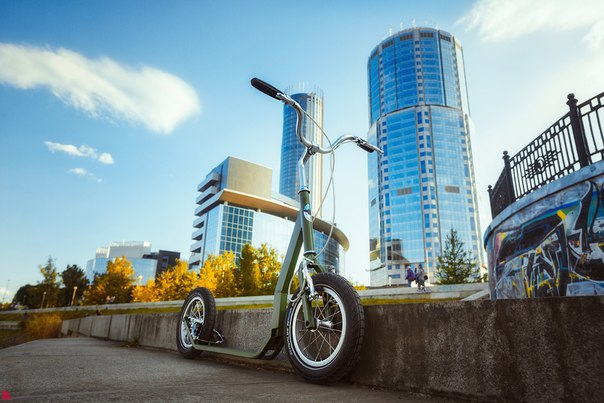
This model costs some money, but, in my opinion, it costs adequately (although I have not tried it personally).
In general, a scooter is an excellent choice for trips up to a distance of up to 8 km per day along good paths, especially if you do not need to go into other vehicles.
Electric scooter
Used and still sometimes use the e-twow booster model, this is a time-tested "classic". For what I appreciate:
- relatively light;
- instantly mastered, can be given to guests;
- in Russia you can buy any spare parts;
- only regenerative and rear foot brakes (never used), no v-brake, discs or pads for you - minimalism;
- there is cruise control;
- you can kick with your legs if you need to burn calories or something went wrong (never "wrong" was).
Used almost all year round (for winter trips it is necessary to change the rear wheel to an inflatable one ( example ), otherwise it will be “entered”):

In what cases should I prefer a unicycle (my criteria, of course):
- trips of more than 10 km in both directions on good sidewalks / paths; on a unicycle, a static position depresses;
- no time / desire to learn;
- it seems that the unicycle is more dangerous;
- for riding in winter (I agree, exotic) on an electric scooter is somehow more reliable. In the courtyard, on a packed snow, I rode my daughter on a sled with a monowheel without any problems, much to the delight of all parties, but I would not risk taking the route with ice.
Bike
My current choice is for relatively long trips. Now the distance home-work-home is 16 km, you can ride on a unicycle, of course ... But no, not for me - and so the work is sedentary, but there is also an hour to “defend”.
I go, again, all year round:

Monowheel
Ideal transport for a “jump” to a distance of up to 12 km per day. I use it with great pleasure when I go from my summer cottage to work — a few kilometers “bullet” along the dirt road to the railway station, then just a few kilometers from the metro to work.
Significantly superior to everything else (except legs) in compactness, maneuverability and ease of transport. Riding relatively short distances is much more pleasant than using other modes of transport - soft, stylish, minimalistic.
I don’t like to ride far, sometimes my legs go numb, and in general, I think a bicycle is more useful. But this is mine, personal. There are people who easily roll out tens of kilometers.
Monowheel - selection criteria
The main thing that should be based on when choosing a monowheel:
- Battery capacity;
- overall reliability.
It may seem strange that we are talking about capacity, not about power, but these things are connected - the more batteries are used in the wheel, the more peak power the wheel can develop. This becomes especially important when the battery is very low.
In principle, you can ride a wheel with a small capacity / power, but you need to clearly understand the consequences. When riding a monowheel, one fulcrum is used, intelligence
The wheels are constantly and very sophisticatedly seeking balance. The search for balance in some cases may require a very large release of energy. Such cases, for example, include an unexpected encounter of an obstacle in the form of a recess or protrusion on the asphalt, sudden accelerations and braking. And if the last two cases can be somehow controlled, then the first is a constant threat. Thus, there is not much capacity and power.
Another important factor that directly depends on the battery capacity is the range. Manufacturers indicate the values obtained in conditions that are very far from objective reality. To evaluate what will actually be, you can use a mileage calculator . In my experience, it is very similar to the truth. When calculating, note that:
- to your weight you need to add the weight of the wheel;
- you need to select the drive with acceleration / decceleration mode.
For the wheels that are discussed in this article, the results are as follows:

If you want to delve deeper into the topic of power, I recommend the one-of-a-kind article, Test of unicycle on a dyno-stand .
As for the rather vague "reliability." There are quite a few nuances in the unicycle, both hardware and software, which affect safety. In general, identifying and solving them is quite difficult, and they hope that this would be taken into account in some cheap noname I would not. For several years I have owned models of two companies - KingSong-14D and Inmotion V8, there are no complaints about reliability, so briefly go over other models of these companies.
KingSong KS14M 174Wh
174 Wh, 12.80 kg, 25.000 ₽

A good choice for light girls and children. In principle, "uncles" can also drive carefully, but the mileage will be 6-9 km.
Inmotion v5f
320 Wh, 550 watts, 11.9 kg, 37.900 ₽
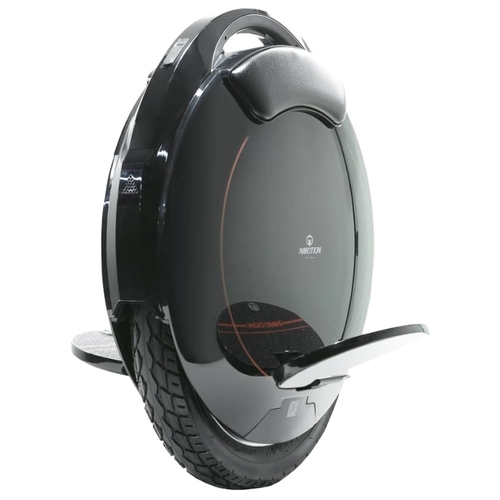
The power here, oddly enough, is lower than that of the KS14M, but the capacity seems to me to be a higher priority parameter. A great option for light and medium weight. In the video - discontinued model V5:
KingSong KS14D 420Wh
420 Wh, 800 watts, 13.6 kg, 45.000 ₽
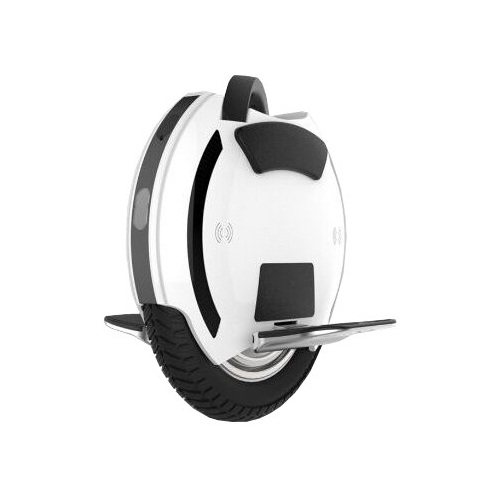
I went for a while, then I gave it to the child. My 100 kg pulls perfectly, but at a distance of ~ 12 km. Then it starts annoyingly squeak and slow down. For my own safety.
InMotion V8
480 Wh, 800 W, 13.5 kg, 55.000 ₽
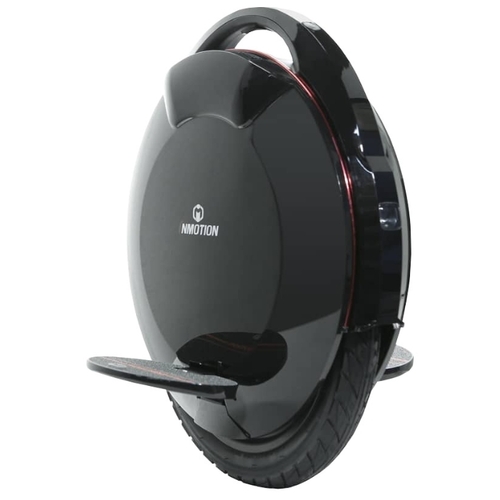
This is my choice. 100 kg of weight confidently travel 20 km, made firmly, monolith, two handles. The only drawback is the price. But the ideal is never cheap.
KingSong KS14DS 840Wh
840 Wh, 800 W, 15.5 kg, 62.000 ₽
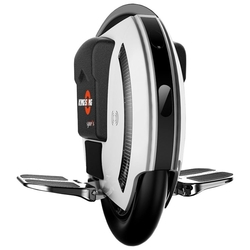
“Long-range” version of the KS14D. Sense, in my terms, does not have. Better to take the KS 16S.
KingSong KS16S 840WH
840 Wh, 1200 W, 17.3 kg, 66,900₽
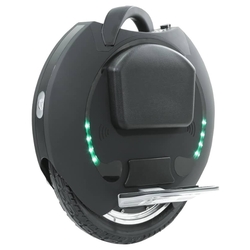
If you need to move something heavy far and long - here you are. Once he consulted a colleague about the development of riding skills and, accordingly, had a chance to try. There is a minus - it strongly presses on the lower leg, since the battery pack protrudes strongly from the body at a low height. However, this minus is only for the period of study.
Inmotion V10F
960 Wh, 2000 W, 20.6 kg, 82,000₽
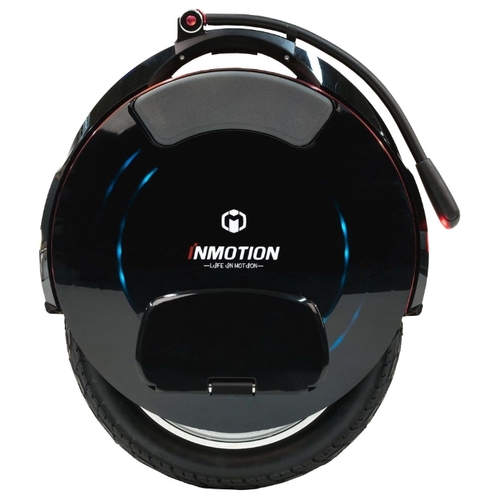
An even more long-range option. The meaning for trips to work in the last two models do not see. For long pokatushek - the most, of course.
Inmotion V8 or KingSong KS14D
I use both models and can make detailed lists of mutual benefits. It is useful to get acquainted with them also in order to understand what other parameters are important for choosing a wheel.
For 14D
+ cheaper
+ more nimble (consequence of size 14 ")
+ smaller size (consequence of size 14")
+ retractable handle is easy to extend, it is much more convenient to pull out and roll
- But for my height (185 cm) it’s short, I have to bend
+ headlamp with light sensor
+ direction of movement doesn’t matter - the white headlight turns on in the right direction
+ for me - noticeably more comfortable pedals (wider)
+ you can listen to music through the speakers
Behind the V8
+ is more stable in a straight line (consequence of size 16 ")
+ better rides on the curbs (16 "size consequence)
+ puts less pressure on the lower leg, it is much easier to learn on it
+ a reliable separate carry handle integrated in the case, with a button for temporarily disabling the wheel, it’s much more convenient to take and carry
+ pull-out handle higher , with my height (185 cm), the handle on the 14D is short
+ the pull-out handle is more reliable; I note that on the Kingsongs, the pull-out handle is a very weak spot
+ longer range
+ there is a proprietary cover
+ “denser” everything is done, the monolith
+ pedals are more convenient to fold (foot once and that's it, with 14D it’s not)
My personal choice of these two models is definitely V8, with the following comments:
- the retractable handle "clicks out" very tightly, as a workaround I do not snap it to the end
- the gaps between the wheel and the housing are very small, "lifting" may be required. I did it
easily, once and twice .
- if you drive hard, you can catch the pendulum (I have never had it)
- to ride in light shoes is uncomfortable, the upper part of the wheel is too tightly in contact with the legs, after a few minutes there are unpleasant sensations. I put on hiking boots or even winter boots and everything is ok - they increase the gap between the legs and the wheel.
Somehow.
